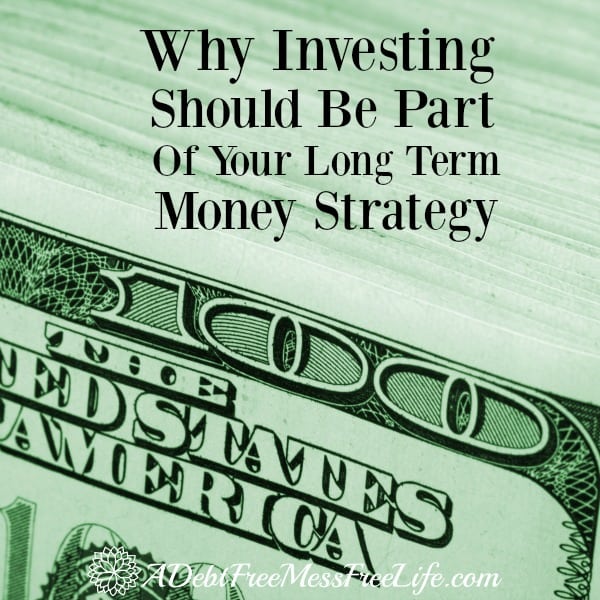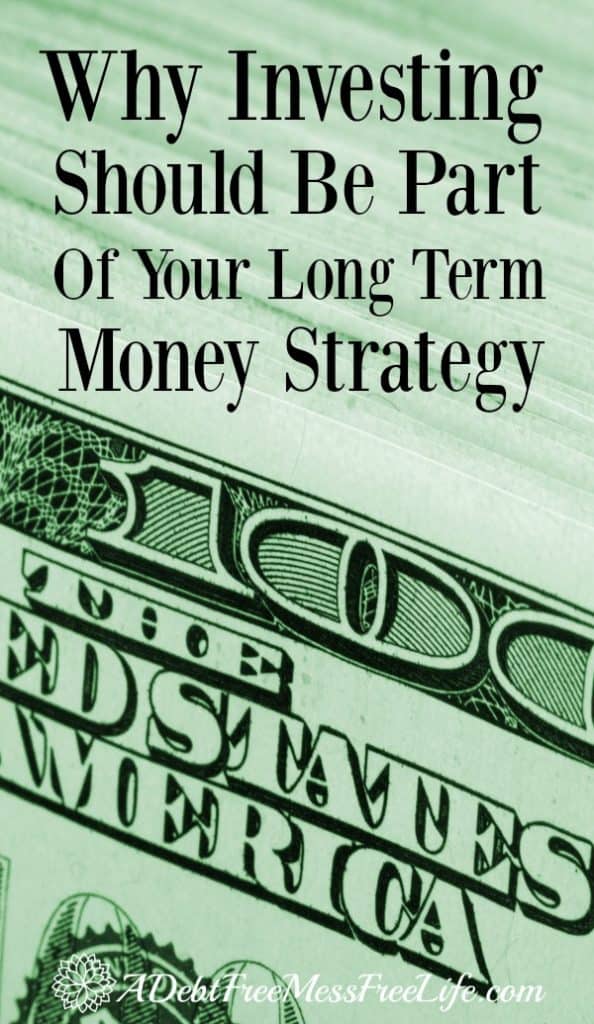A Mess Free Life may collect a share of sales or other compensation from the links on this page.
Depending on where you are on the financial path to a different money story, will depend on when you feel it’s time to start investing.
The money guru Dave Ramsey would say you don’t start this part of the process until your debt is paid, you have 3-6 months of living expenses tucked away and you just have a mortgage payment to worry about. I agree.
Depending on your age and whether or not you’ve ever invested will depend on how much effort will go into this process.
If you’re heading towards retirement, then you’ll need to do some major contributing. If you have more time on hand, putting aside 15% of your income is a great place to start.
Table of Contents
Why Investing Should Be Part of Your Long Term Money Strategy
It’s Smart
If you’re at the point where you have all your debt paid off, now is NOT the time to go out and splurge or give yourself a big fat raise. Now is the time to look down the road called life and realize you’ll need money to live on when you’re older and not able nor desire to work any longer. Those who fail to see the smartness in this strategy will be eating Alpo in their golden years if they’re not careful.
It’s Proven
There are countless people out there that will tell you saving for retirement is a smart move. Can all those people be wrong?
I’ve talked with many financial advisors and planners in my lifetime, and they all agree if you want to live comfortably you’ll need to invest, starting as early as possible to have the best impact on your money.
Your money needs time to grow (something about compounding) for you to reap the biggest gain from your money. Of course, your money won’t always grow, but the longer you have, the better chance you have of seeing stable growth over the long haul.
Mutual Funds
Start where you have a match. If you’re not currently taking advantage of your company’s 401 K, 403 b, 457 plan, you should be. You’re leaving money on the table which is a big mistake.
So let’s say you’re going to stick with the recommendation of contributing 15% of your gross income, before taxes to your retirement. You want to start by putting money into a 401, 3, or 457 plan if you have one available to you through your company. If your company matches 3%, put that in and move to IRA’s.
IRA’s Which One To Choose
I have a professional financial planner I work with that helps me to maneuver all this long term planning stuff. It’s a good idea to find someone you trust that can guide you and advise you when it comes to your money. But there are some excellent resources available to DIY’ers who like to learn the nitty gritty about investing and IRA’s.
I recently came across an article The Best IRA Accounts on the CNBC and found the article an excellent resource for individuals looking for in-depth information on which IRA’s are the best out there and which one would be the best for your particular circumstances. I encourage you to read it to further your knowledge and understanding about IRA’s.
With that being said, you want to fully fund your Roth IRA’s after you matched funds from your employer. If after you fully fund your IRA’s you haven’t reached the 15% threshold, go back and bump up your workplace account.
Peace of Mind
When I get older I don’t want to worry about keeping a roof over my head or having to choose between health care or food, or not be able to enjoy my life as I reach those golden years. Instead, I want to enter that time of my life with the certainty I can take of myself and not be destitute.
Don’t you want that for yourself too?
If you’ve paid off your debt and have adequate savings, start planning your investment strategy and solidify your financial future.


